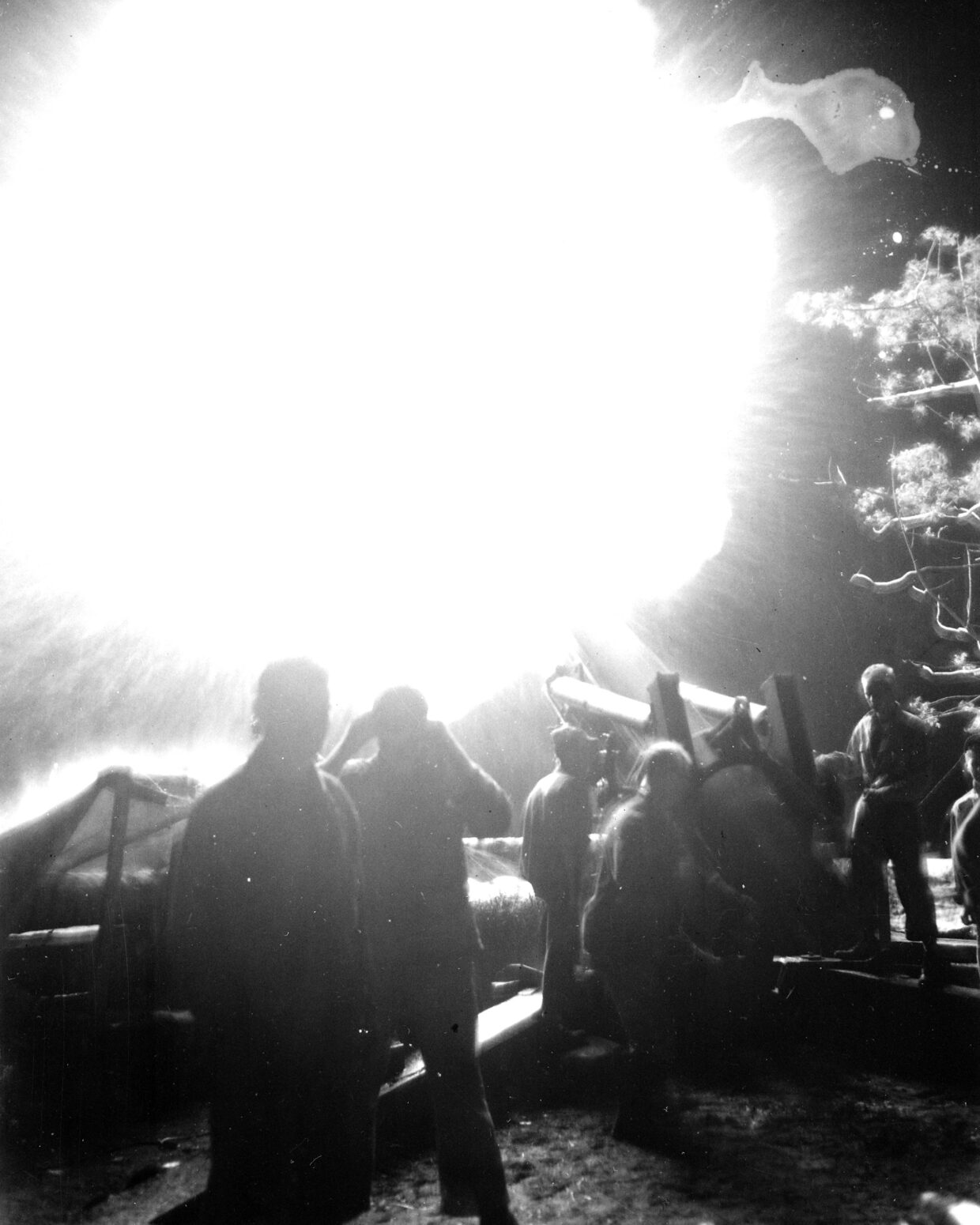| III Corps Artillery of the Seventh Marine 155 mm Gun Battalion “Long Tom“ M1 firing during the night of August 2-3, 1944, during operations to liberate the town of Finegayan. Commanded by Lieutenant Colonel John S. Twitchell; Executive Officer Major Dale H. Heely. Seventh Battalion‘s “Long Toms“ were initially set up in the open 500 yards from White Beach 2. The positions were in the shadow of the mountain range secured by the Fourth Marines and the Army‘s 305th Infantry after heavy fighting. At the start of the campaign, enemy opposition might be fierce enough to contain the beachheads and prevent the planned link-up on the Force Beachhead Line, whereThird Marine Division and First Provisional Marine Brigade would protect the beachhead. Successful employment of corps artillery presented a problem. The minimum effective range of the powerful 155 mm guns and howitzers was so great that they might be limited to deep support missions should the assault move slowly. To meet this contingency, United States Army Brigadier General Pedro A. del Valle and his newly-formed artillery staff planned to land two 155 mm battalions in the south behind the brigade. This would permit the heavier guns of the Seventh 155 mm Gun Battalion, with only long range capabilities, to reinforce the fires of the Twelfth Marines in support of the 3d Division. All artillery battalions of the Twelfth Marines had displaced forward by 2 August in order to be in position to provide continuous support to regiments of the division. Corps artillery had also moved, so that its longer range guns could now be used more effectively. By nightfall, units had brought forward a good supply of ammunition in anticipation of the increased need for artillery support in the Finegayan area. During the night 2-3 August, the Twelfth Marines delivered 777 rounds of harassing and interdictory fires on roads and trails within the division‘s zone of action. On August 9, investigation showed that a Saipanese civilian report of 2,000-3,000 Japanese located in the northern cliff area had caused a sudden halt in the American advance. Corps artillery was notified to place all fire possible in that region. With the Seventh 155 mm Gun Battalion being the only corps unit that could reach the suspected enemy concentration, it received orders to cover the densely forested terrain. In two and a half hours of uninterrupted firing, the Seventh hurled an unprecedented 1,000 rounds into the area from the 12 guns of its battalion. Division artillery batteries added 2,280 75 mm and 105 mm shells to the same target. No resistance met the Ninth Marines when it moved in, but neither were there many Japanese bodies. As the Corps Artillery A-3 later wrote: “The intelligence information on which all the firing had been based was wrong, and we had made this great effort for nothing. However, it did provide a bang-up end to the campaign.“ The M1 155 gun has a range of 14.4 miles (23,221 meters) and can fire 6-inch shells at the sustained rate of 40 per hour. | |
| Image Filename | wwii1051.jpg |
| Image Size | 1.01 MB |
| Image Dimensions | 2284 x 2855 |
| Photographer | Hager, A.F. |
| Photographer Title | Corporal, United States Marine Corps |
| Caption Author | Jason McDonald |
| Date Photographed | August 03, 1944 |
| Location | |
| City | Finegayan |
| State or Province | Guam |
| Country | Marinanas |
| Archive | National Archives and Records Administration |
| Record Number | |
| Status | Caption ©2007, ©2024 MFA Productions LLC Image in the Public Domain |

Author of the World War II Multimedia Database

